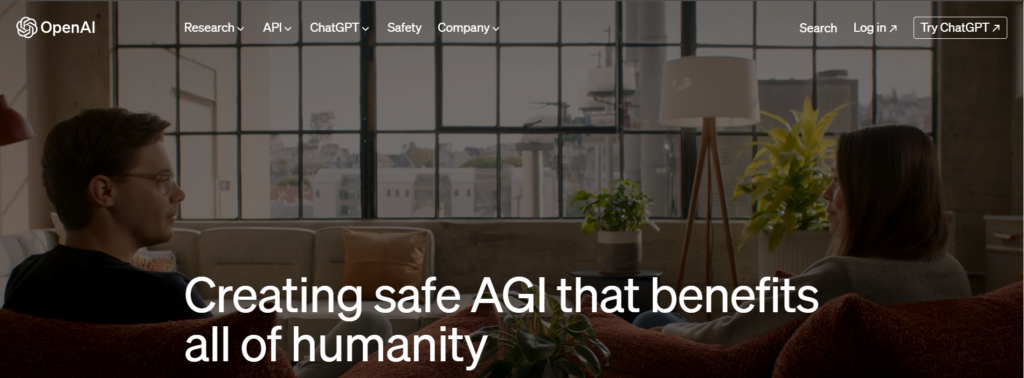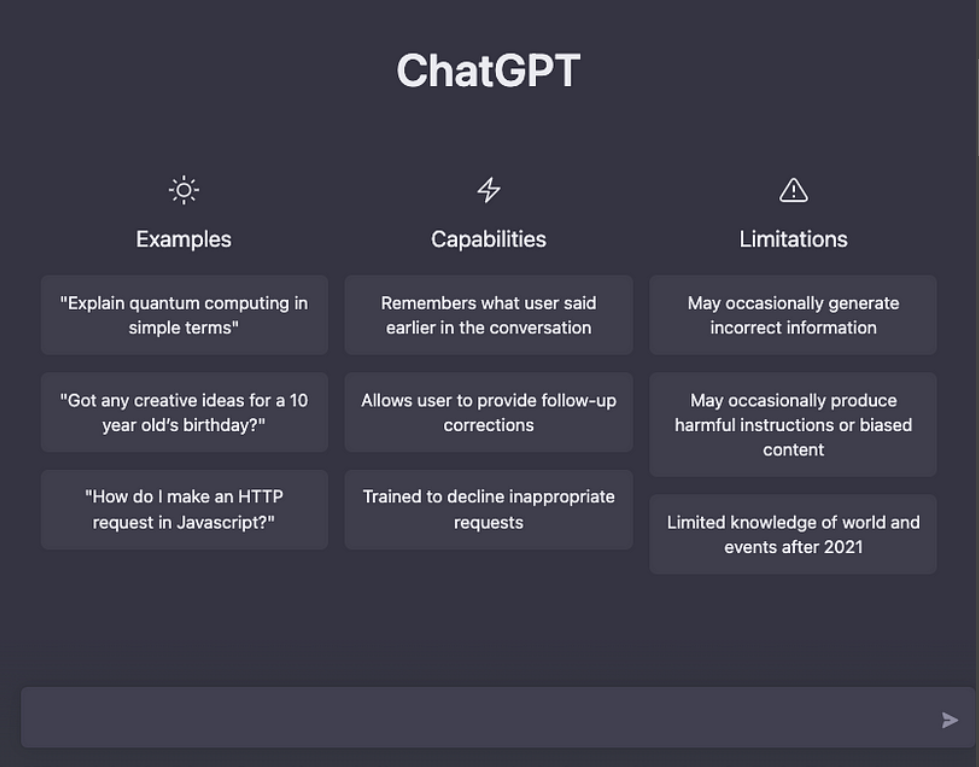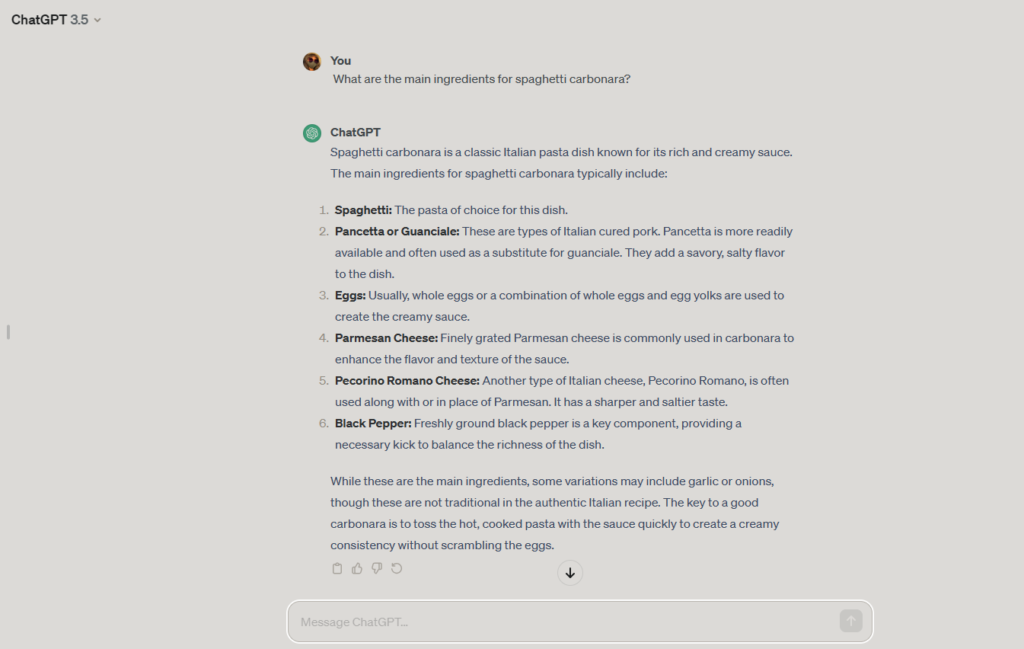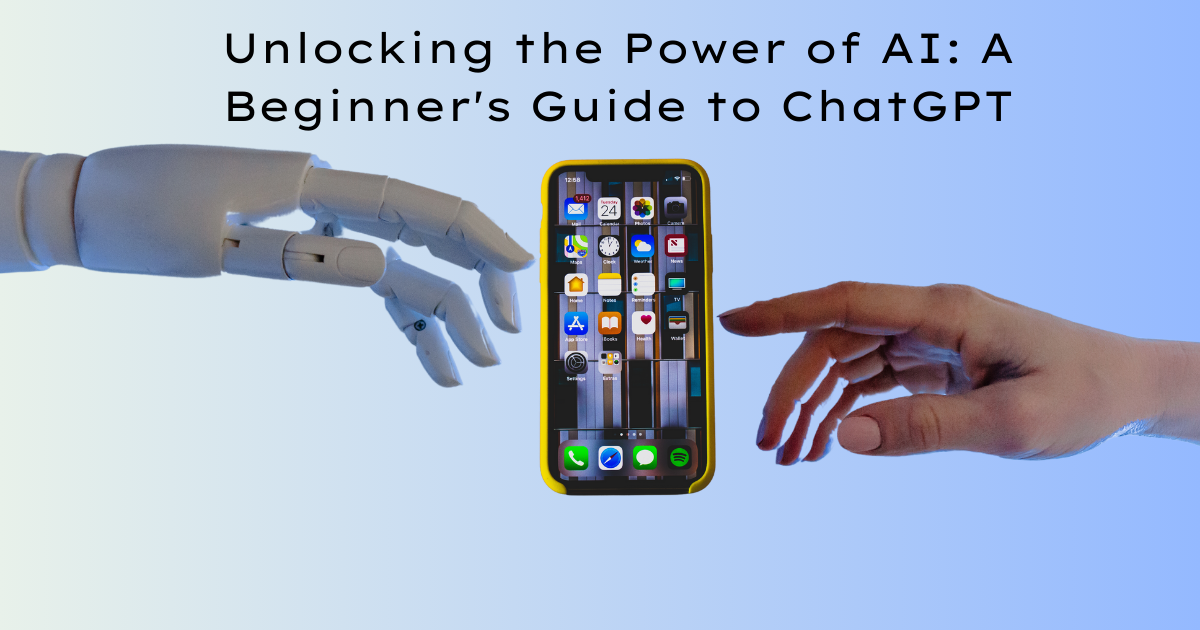A Guide to ChatGPT 3.5
In this blog post we’ll dive into the basics of Open AI‘s ChatGPT 3.5. I aim to explain what it is, how it works, how to get you started, and how to prompt; in leyman’s terms. I will give examples that show you how easy it is to design your prompt and start using it for everyday tasks, even if you’re not a tech wizard.

Imagine having a conversation with a computer that can understand and respond to you just like a human would. That’s ChatGPT for you! It’s a type of Artificial Intelligence that can chat, answer your questions, and even help you solve problems based on pre-trained data.
Getting Started with ChatGPT
First thing you need to do is to create an account with OpenAI. Signing up is free, you just need your email address! (There is a paid version called GPT 4, but I will save that for another post) GPT 3.5 model is for people that is just getting started with generative AI, this gives you access to unlimited messages, interactions & history log. This chatbot can be accessed on Web/iOS & Android platforms. Once an account is created the user interface will open up with the ChatGPT logo and a quick infograph summarizing the main points about the chatbot’s capabilities and limitations.

Interacting with GPT 3.5 is very simple, the key is understanding how to ‘talk’ to the AI. This involves learning how to give it prompts or instructions in a way that it understands best – natural language. For example ”What are the main ingredients for spaghetti carbonara?” Within a few seconds the chatbot started generating the recipe; its output is structured in a format that consist of a brief intro, the main answer and then it concludes with tips or extra info.
(See image below)

Writing Prompts
The most effective way to get good, concise and clear outputs from GPT is in the prompts – how you ask questions or give it tasks. Think of it like asking a friend for help – the clearer you are, the better help you’ll get. It’s all about being specific and clear in your requests. Prompts can be as simple as asking for a recipe or structured in a way that is design to give a specific output. Such as asking for a recipe that only uses the ingredients that you have available in your pantry. I go in to more details about this in my post about Prompts.
ChatGPT in Everyday Life
If you are thinking to yourself, “How can this help me?” I would advise you to change your mindset and instead ask, ”How can this help me in my everyday life?” Back in 1971 when the first email was sent, I am pretty sure the masses weren’t thinking that electronic mail would be apart of everyday life. Fast forward decades later and emails are sent and received on a daily basis. ChatGPT can be used for a variety of daily tasks, sort of in the same google is used daily for web searches, gps navigation, document writing etc. From helping you write an email, to summarizing a text or even offering advice on complex topics, the possibilities are indeed endless.
AI: Friend, Not Foe
As I have personally come to realize, understanding and using AI can actually be a huge advantage. It can be used as a tool to enhance your current skills, learn new one, and make doing the most mundane tasks in your work/home life more efficient. A lot of employers in the future will be looking to prioritise ize candidates that have knowledge or experience in using Ai systems – just as how proficiency in Microsoft Office is valued.
Be Curious
ChatGPT is more than just a tech trend; it’s a gateway to making your life easier and more efficient. Whether you’re a tech newbie or just curious about AI, understanding and using ChatGPT can open up a world of possibilities. So why not give it a try and see how it can work for you?
Remember, the future is not about AI replacing us; it’s about AI empowering us. To sign up & try it out click HERE.
Happy exploring!

Leave a Reply